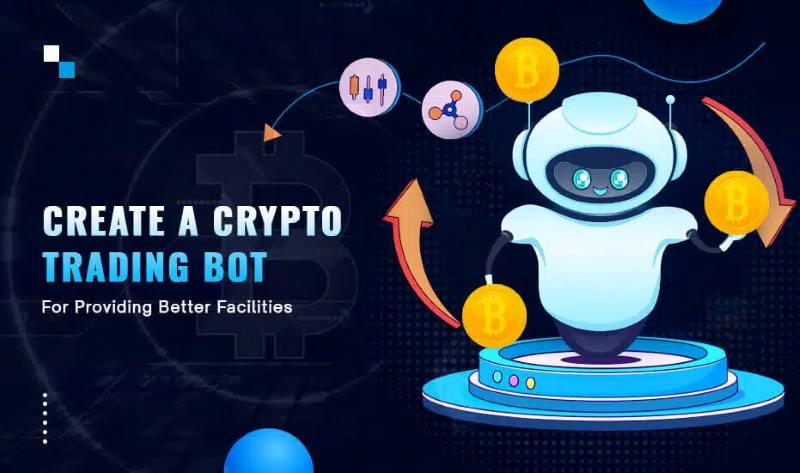Creating a trading bot can transform your cryptocurrency trading experience by automating your strategies and maximizing profit potential. This comprehensive guide walks you through the essential steps—from assessing your skills and resources to deploying your bot and adapting to market changes.
Whether you are a beginner or an experienced trader, understanding how to create a trading bot can significantly enhance your trading journey.
How to Create a Trading Bot
Creating a trading bot can be an intricate yet rewarding process. By understanding each step involved, you can develop a bot that effectively automates your trading strategy. Here’s a comprehensive guide to help you through the process.
Step 1: Assess Your Needs and Resources
The first step in creating a trading bot is to evaluate your personal capabilities and resources. Consider your technical expertise: do you possess the programming skills required to develop a custom bot? If you lack such skills, a pre-built solution might be more appropriate for your needs.
Additionally, assess your budget, as building a custom bot often requires a significant initial investment compared to utilizing an existing one. Understanding these factors will help guide your decision on whether to build or buy.
Step 2: Choose a Programming Language
Selecting the right programming language is crucial for the development of your bot. Python is often favored for its readability and extensive libraries, making it an excellent choice for data analysis and financial modeling.
If you require high performance, particularly for high-frequency trading, C++ might be the best option due to its speed and efficiency. JavaScript can also be beneficial, especially for web-based applications. Your choice should align with both your technical capabilities and the specific requirements of your trading strategy.
Step 3: Select a Crypto Exchange
Once you’ve decided on a programming language, the next step is to choose a cryptocurrency exchange that accommodates automated trading. Not all exchanges support trading bots, so it’s essential to select one with a robust Application Programming Interface (API).
This API is vital for your bot to execute trades and access real-time market data. Look for exchanges with strong security features, low fees, and high liquidity, as these factors will significantly impact your bot’s performance.
Step 4: Define Your Trading Strategy
A well-defined trading strategy serves as the foundation for your bot’s decision-making process. This strategy should outline the specific rules and parameters that dictate when to buy, sell, or hold a cryptocurrency.
Various strategies exist, such as arbitrage, which exploits price discrepancies across exchanges, market-making to profit from bid-ask spreads, and trend-following strategies that capitalize on existing market momentum. Your choice of strategy should reflect your risk tolerance and overall investment objectives.
Step 5: Design the Bot’s Architecture
With your strategy in place, the next phase involves designing the architecture of your trading bot. This includes creating an algorithmic model that translates your trading strategy into a functional system. The decision-making engine, a core component of your bot, will determine how it analyzes market data and executes trades.
Clearly define the indicators and conditions that will trigger buy or sell actions, ensuring your bot operates effectively based on real-time data.
Step 6: Develop the Bot
Now it’s time to turn your design into reality by coding your trading bot. This process entails using the chosen programming language to implement your bot’s logic.
Ensure that your bot can connect to the selected exchange via its API, handle trading operations, and manage your portfolio according to the defined strategy. The complexity of the code will vary depending on the intricacies of your trading approach and the functionalities you want to include.
Step 7: Backtest the Bot
Before launching your bot into the live market, rigorous testing through backtesting is essential. This phase simulates how your bot would have performed using historical market data, allowing you to identify any weaknesses in your strategy.
Analyzing backtest results helps refine your algorithmic model and optimize your bot’s parameters for risk management. This testing phase is crucial for building confidence in your bot’s capabilities under different market conditions.
Step 8: Deploy the Bot
After successful backtesting, you are ready to deploy your bot on a live trading account. Connect your bot to the chosen cryptocurrency exchange and fund it with an amount you are comfortable trading.
It’s advisable to start with a small investment and gradually increase your exposure as you gain confidence in your bot’s performance. Implementing risk management techniques, such as stop-loss orders, can help safeguard your investment against unexpected market fluctuations.
Step 9: Monitor and Optimize
Once your bot is live, continuous monitoring is critical. Track its performance metrics and trading activity to identify areas for improvement. Market conditions can change rapidly, and strategies that were once effective may need adjustments.
Regularly reviewing your bot’s trading log and performance will help you adapt its parameters or strategies as necessary.
Step 10: Adapt to Market Changes
The cryptocurrency market is characterized by its volatility and unpredictability. To maintain your bot’s effectiveness, stay informed about industry trends, regulatory changes, and technological advancements.
Being proactive in adapting your bot’s strategies to current market conditions will increase its chances of long-term success. This may involve updating code, refining algorithms, or exploring new trading opportunities as they arise.
In summary, building a trading bot requires careful planning and execution. By following the outlined steps—from assessing your resources and choosing the right programming language to defining a robust trading strategy and continuous monitoring—you can develop a powerful tool that enhances your trading efficiency.
The cryptocurrency market is dynamic, and your bot should be able to adapt to ensure long-term success. Embrace the journey of automation, and unlock new possibilities in your trading endeavors.
Follow Dynamic Crypto Network for expert tips and community support on your path to success!



